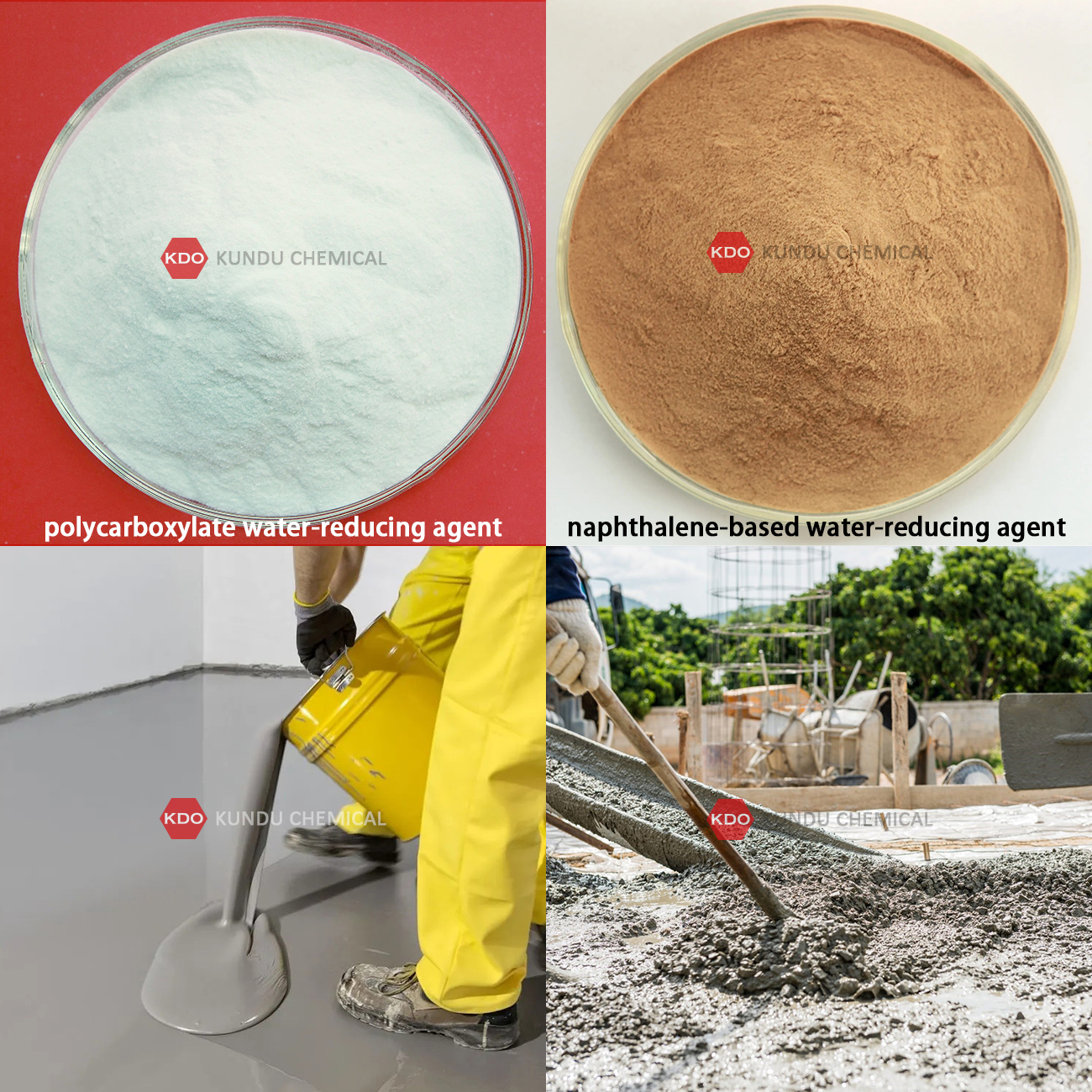- Time:2024/5/30Posted:SHANDONG KUNDU CHEMICAL CO.,LTD.
Water reducing agent is one type of additives that is widely used in concrete/dry mixed mortar. Its effect is very important. Generally, there are three main factors that affect the effect of water reducing agent.

1. The influence of cement characteristics on the effect of water reducing agent
Different types of cement will have an impact on the effect of the water-reducing agent. The mineral composition and chemical composition of the cement clinker and the form of gypsum (as a setting regulator) will all affect the effect of the water-reducing agent. In addition, the fineness of the cement, the type and amount of admixtures in the cement, the freshness of the cement, the moisture content and temperature of the cement, etc. will also affect the effect of the water-reducing agent.2. The influence of the characteristics of the water-reducing agent on the effect of the water-reducing agent
Different water-reducing agents have different characteristics and are suitable for concrete of different strengths. When using them, you should choose the appropriate water-reducing agent according to your needs, otherwise the effect of the water-reducing agent will be affected.3. During storage and use, some problems are often encountered, which make the concrete water-reducing agent less effective or even invalid. The main reasons are:
Rainwater enters the water reducing agent tank, causing the concentration to decrease
Cause analysis: The feed port above the water-reducing agent tank was opened and the lid was not closed. Heavy rain and water that may wash the top of the tank flowed into the tank, causing the concentration of the water-reducing agent to drop. Rainwater or flushing water enters the water-reducing agent tank, causing the concentration to decrease, resulting in a low water-reducing rate and a small slump of concrete.The water-reducing agent has poor homogeneity and the concrete partially retards setting.
Cause analysis: The agitator of the water-reducing agent tank is faulty, resulting in uneven density of the water-reducing agent. The density of the water-reducing agent in the lower part of the tank is too high and the condensation time is too long. The concentration in the upper part is too small and the condensation time is short.Mixing different types of water reducing agents
Cause analysis: Polycarboxylate water-reducing agent and naphthalene-based water-reducing agent are incompatible when mixed, resulting in poor workability of concrete.Mixing different brands of water reducing agents
Reason analysis: Two waterproofing agents purchased during the same period were used in two projects. One had a significant water-reducing effect, and the other had a smaller water-reducing rate. Workers used the bagged waterproofing agents mixedly when transporting them.





